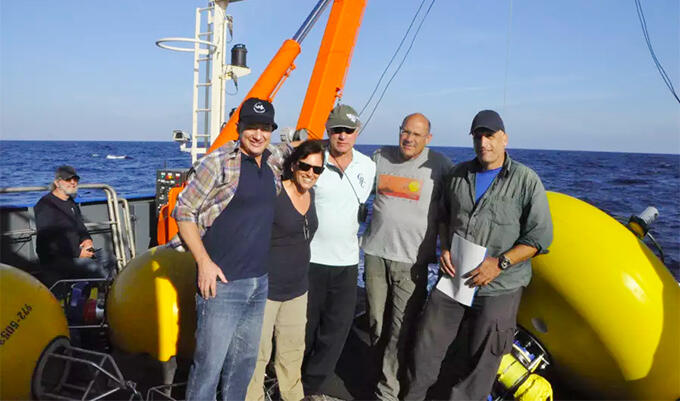The first permanent marine station to study the deep sea off the coast of Israel will be launched after completing a successful, one-year pilot project.
The station is 50 km. from the Haifa shore and run by Bar-Ilan University, the Israel Oceanographic and Limnological Research
The team consists of Bar-Ilan Prof. Yishai Weinstein from the department of geography and environment and Prof. Ilana Berman-Frank from the faculty of life sciences, as well as Prof. Barak Herut and Dr. Timor Katz from the IOLR.
Also involved are researchers from a variety of fields in marine sciences from Hebrew University, Tel Aviv University and the Geological Survey.
The station is of importance in order to understand the sea’s response to, for example, occurrences of pollution following unfortunate leaks or accidents that result from the increasing number of gas exploration and production platforms in the eastern Mediterranean.
A few days ago, a seminar was held at the IOLR in Haifa to mark the conclusion of the pilot and to present preliminary findings.
Herut and Weinstein noted that the establishment of the station is a “turning point” in the study of the Mediterranean Sea, a highly fragile and sensitive ocean basin that has been subject to several environmental stresses, including the digging of the Suez Canal, the drilling for offshore gas and the construction of desalination plants on its shores.
Berman-Frank presented information on the unique biological system of the eastern Mediterranean and its importance for studying the “biological pump,” a natural process that carries carbon from the sea surface to the deep sea, thereby regulating the amount of carbon dioxide in the atmosphere.
Weinstein stressed that goals of a global nature have been set for the station, including better understanding the effects of global warming. The eastern Mediterranean waters are unusually warm, even at a depth of more than 1,000 m., making it a natural lab for researching and predicting the behavior of the oceans after years of being subjected to warming.
Dr. Olga Zlatkin, a postdoctoral researcher on the project, and doctoral student Ronen Alkalai, study materials captured in the “sediment traps” located along the marine station’s cable. At the symposium they presented preliminary findings indicating a constant flow of particles from the surface to the bottom of the sea, enabling the transport of organic carbon for safekeeping in the “dark zone” of the sea – more than 1,000 m. down – which is part of the biological pump.
The findings also suggest an interesting possibility that the flow of particles and the efficiency of the pump increases during winter storms, when large quantities of dust and materials drifting from the seabed in the coastal region reach the open sea.
These findings can also teach about the effectiveness of disposal from the sea surface to the floor during pollution events – a possibility that will be further explored later in the study.
Dr. Nir Stern of the IOLR disclosed a surprising finding during the pilot’s first six months. The sediment traps, which were placed at depths of 180 and 280 m., were completely filled with deep-sea fish called “sharpchin barracudina,” which have rarely been documented in the waters near Israel and whose adult fish have never been reported in the scientific literature.
Next week, a group of researchers will visit the station aboard the new IOLR-operated research vessel Bat Galim. The mooring will be released from its anchor using acoustic signals, and the cable and devices will be loaded carefully on board.
The samples and physical data collected will be dismantled and studied in the lab, and after maintenance, the station will be re-positioned for more sampling and recordings until the next visit.











